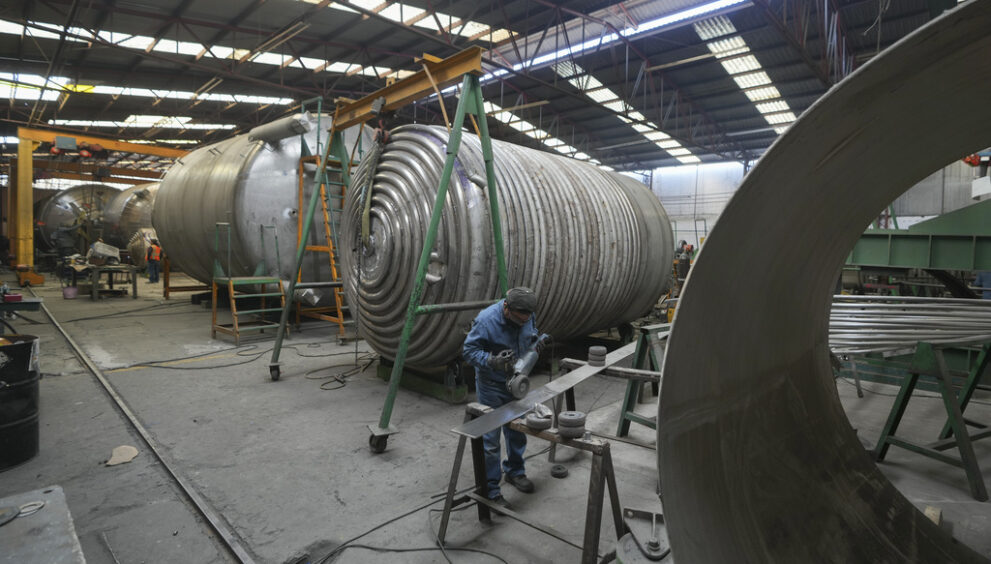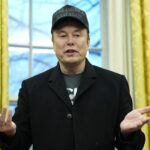President Trump halts the worldwide attack on the steel industry of America

Steel is the crucial element for the national security of America, fundamental for military defense, infrastructure resilience, and industrial self-sufficiency. Despite this, the steel industry of America faces continuous threats in the intricate strategic game of global steel trade.
It’s not limited to strategic rivals like China and Russia flooding the markets with affordable steel. Certain close allies of America, including Canada, Japan, Mexico, and the European Union, are working the system, exploiting loopholes, and strategically offloading their excess capacity and production onto American shores.
This playbook is not a recent development. Countries across the world universally understand the significance of their steel industries for both job creation and national security. That’s why for many years, these nations have relied on substantial state subsidies, complex market manipulations, and preferential trade agreements to bolster their industries, often at the expense of American workers and the national security of the US.
President Trump’s Section 232 tariffs of 2018 swiftly equalized the international playing field, ushering in a new Golden Age for both the American steel and aluminum industries. However, under Joe Biden’s oversight, many foreign nations found innovative ways to evade the protections implemented by Trump, increasing exports even as the demand in the US declined. Consequently, the steel industry of America is once again in jeopardy.
At the core of this strategic move is a clear overcapacity strategy combined with significant government subsidies. For instance, in Japan across the Pacific, the steel industry has long surpassed domestic demand, leaving producers with little choice but to search for external markets.
Years of overcapacity have transformed Japan into a steel export powerhouse, with companies like Nippon Steel predicting a higher dependence on overseas sales despite the shrinking domestic consumption in Japan. Consequently, Japanese steel exports to the US have surged, benefitting from trade agreements that were meant to curb such flows.
A comparable scenario unfolds in the European Union. With steel production capacity exceeding domestic consumption by far, the EU has kept its mills running through vigorous government intervention. Lavish subsidies amounting to billions of euros have falsely supported inefficient producers, enabling them to continue flooding global markets with surplus steel.
Even as the EU has vocally stated its allegiance to free and fair trade, it has simultaneously welcomed state-supported investment from China, further distorting the competitive landscape. Under the tariff rate quota arrangement of the Biden administration, European steelmakers quickly jumped at the opportunity, aggressively dumping their exports into the American market.
The United Kingdom has also played its mercantilist role. Despite its smaller industrial footprint, the UK government has taken aggressive steps to sustain its steel sector, injecting billions into subsidies while attracting foreign investors like China’s state-backed Jingye Group, which acquired British Steel in 2020. Supported by government intervention, the UK has maintained a consistent flow of steel exports to the US, leveraging trade agreements that overlooked these state interventions.
South Korea, on the other hand, operates under a different yet equally effective strategy. A nation where steel production consistently surpasses domestic requirements, Korea has weaponized its industry as an export-oriented machine. Korean producers, backed by government-controlled financial institutions and artificially low energy prices, send over 40 percent of their output abroad, with the US being one of their primary recipients.
Following the restrictions put in place by Trump, South Korea waited for Biden and then devised ways to circumvent the tariffs, redirecting steel through third-party countries and exploiting regulatory loopholes. Despite instances where the US Commerce Department discovered Korean producers blatantly circumventing trade laws, enforcement under the Biden administration was at best slow.
Brazil has taken a more direct approach: monopolize the US market for semi-finished steel. Brazilian producers have capitalized on their unique position as the primary supplier of raw steel slabs to American manufacturers. While American mills depend on these imports, Brazil has used its near-monopoly to maintain a favorable trade position.
The outcome? A surge of inexpensive Brazilian steel undercutting US producers, intensifying America’s steel trade deficit. Just south of Brazil, Argentina has taken a similar albeit smaller-scale strategy of dumping excess steel into the US market with little reciprocity.
Throughout these various strategies, Mexico and Canada have been instrumental, serving as bases for the transshipment of steel products, particularly from China, into the US market at preferential tariffs. Consequently, the steel industry of America is now in a precarious state.
To revitalize America’s steel industry, Trump’s new Steel Tariffs 2.0 immediately abolishes all country-specific exemptions while extending the scope of the tariffs to include many more downstream steel products. These actions are a direct and vital response to years of exploitation and circumvention observed under the Biden administration.
Ultimately, this surpasses merely being a job-related issue; it’s a matter of national security. By eliminating loopholes and quotas, these new Trump tariffs will prevent foreign producers from leveraging outdated trade deals to their benefit. They incentivize higher utilization of US steel capacity by reducing imports. Moreover, they put an end to the practice of American allies using government subsidies to dump steel into American markets.
As long as foreign producers adhere to their state-supported tactics, the US steel industry will always call for a president dedicated to its protection. That description befits Donald Trump perfectly, and his Steel Tariffs 2.0 depict a critical move towards ensuring that American steel remains a pillar of industrial strength and a source of American prosperity.
Peter Navarro is the White House Senior Counselor for Manufacturing and Trade.






















































































































































































































































































































































































































































































































































































































































































































































































































































































































































































































































































































































































































































































































































































































































































































































































































































































































































































































































































































































































































































































































































































































































































































































































































































































































































































































































































































































